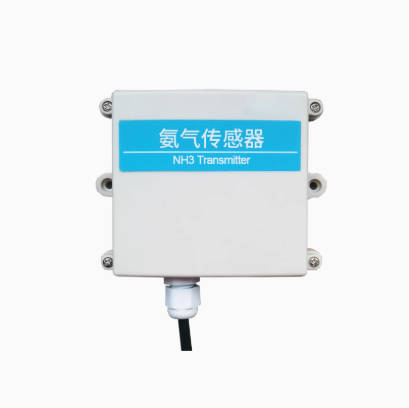
New Gas Sensor Technology Revolutionizes Industrial Safety Standards
However, a new wave of gas sensor technology is now revolutionizing industrial safety standards, offering unprecedented levels of precision, durability, and intelligence.

However, a new wave of gas sensor technology is now revolutionizing industrial safety standards, offering unprecedented levels of precision, durability, and intelligence.
In the realm of industrial safety, the ability to detect and monitor hazardous gases is paramount. From chemical plants to mining sites, the presence of toxic or flammable gases can pose significant risks to workers, equipment, and the environment. Traditional gas detection methods have long been relied upon, but they often come with limitations in terms of accuracy, reliability, and response time. However, a new wave of gas sensor technology is now revolutionizing industrial safety standards, offering unprecedented levels of precision, durability, and intelligence.

The evolution of gas sensor technology has been driven by the need for more effective and efficient ways to monitor gas levels in industrial settings. Early gas sensors were often bulky, slow to respond, and prone to false alarms. They required frequent calibration and maintenance, which could be both time-consuming and costly. Moreover, their limited sensitivity and selectivity meant that they might not detect certain gases or could mistake one gas for another, leading to potential safety hazards.
Enter the new generation of gas sensors. These advanced devices leverage cutting-edge materials science, electronics, and data processing technologies to provide superior performance. One of the key innovations is the use of nanomaterials, such as graphene and metal oxides, which exhibit high sensitivity and selectivity to specific gases. These materials can detect even trace amounts of gases, allowing for early warning and prevention of potential dangers.
Another significant advancement is the integration of microelectronics and wireless communication technologies. Modern gas sensors are now equipped with microprocessors and wireless transmitters, enabling them to collect and transmit data in real-time. This means that gas levels can be monitored remotely, and alerts can be sent instantly to safety personnel or control systems. This real-time monitoring capability significantly enhances the speed and effectiveness of emergency response, reducing the risk of accidents and injuries.
In addition to their improved performance, new gas sensors are also more durable and reliable. They are designed to withstand harsh industrial environments, including extreme temperatures, humidity, and vibration. This robustness ensures that the sensors can operate continuously and accurately, even in the most challenging conditions. Furthermore, many of these sensors are now self-calibrating and require minimal maintenance, reducing the operational burden on industrial facilities.
One of the most exciting developments in gas sensor technology is the emergence of intelligent sensors. These sensors not only detect gases but also analyze the data they collect. They can identify patterns, trends, and anomalies in gas levels, providing valuable insights into the operational status of industrial processes. This intelligence enables predictive maintenance, allowing facilities to address potential issues before they become critical.
The impact of new gas sensor technology on industrial safety standards is profound. By providing more accurate, reliable, and real-time gas detection, these sensors are helping to prevent accidents, reduce downtime, and protect workers' health. They are also enabling industries to comply with increasingly stringent safety regulations and standards.
For example, in the chemical industry, where the risk of gas leaks is high, new gas sensors can detect even the smallest traces of hazardous chemicals. This early detection capability allows for immediate intervention, preventing potential explosions or toxic exposures. Similarly, in the mining industry, gas sensors can monitor for methane and other flammable gases, ensuring the safety of miners and preventing catastrophic accidents.
Moreover, new gas sensor technology is also playing a crucial role in environmental monitoring. Industries are increasingly being held accountable for their emissions, and gas sensors are essential tools for measuring and controlling these emissions. By providing accurate data on gas levels, these sensors help industries to comply with environmental regulations and reduce their carbon footprint.
The benefits of new gas sensor technology extend beyond industrial safety and environmental monitoring. They are also being used in a variety of other applications, such as healthcare, where they can detect gases related to respiratory diseases or anesthetic gases in operating rooms. In the automotive industry, gas sensors are crucial for emission control systems, helping to reduce air pollution and improve fuel efficiency.
Despite their many advantages, new gas sensor technology is not without challenges. The high cost of these sensors can be a barrier for some industries, particularly small and medium-sized enterprises. However, as the technology matures and production scales up, costs are expected to decrease, making these sensors more accessible.
In conclusion, new gas sensor technology is revolutionizing industrial safety standards by providing unprecedented levels of precision, durability, and intelligence. These advanced sensors are helping to prevent accidents, reduce downtime, protect workers' health, and comply with safety and environmental regulations. As the technology continues to evolve, we can expect even more innovative and effective gas detection solutions in the future. With the help of these new gas sensors, industries can operate more safely, efficiently, and sustainably, contributing to a better world for all.